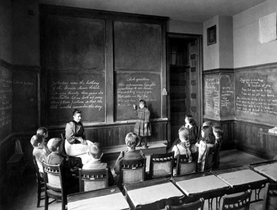Related Research Articles

Henry Alexander Scammell Dearborn was an American soldier, lawyer, author, and statesman. Dearborn was the first President of the Massachusetts Horticultural Society, a member of the Society of the Cincinnati, and the author of many books.

Peleg Wadsworth was an American Patriot officer during the American Revolutionary War and a Congressman from Massachusetts representing the District of Maine. He was also grandfather of noted American poet Henry Wadsworth Longfellow.

William Durkee Williamson was the second Governor of the U.S. state of Maine, and one of the first congressmen from Maine in the United States House of Representatives. He was a member of the Democratic-Republican Party. Williamson was also an early historian of Maine.
Lorenzo Sabine was a U.S. Representative from Massachusetts now more remembered for his research and publishing concerning the Loyalists of the American Revolution than as a public servant.

John Wingate Thornton was a United States lawyer, historian, antiquarian, book collector and author.

Joseph Milner Wightman was an American politician who, from 1861 to 1863, served as the seventeenth Mayor of Boston, Massachusetts.

Nathaniel Bradstreet Shurtleff, Sr. was an American politician, serving as the twentieth mayor of Boston, Massachusetts from January 6, 1868 to January 2, 1871.

Samuel Crocker Cobb, was a businessman and politician who served on the city councils of the cities Roxbury, Massachusetts and Boston, Massachusetts and who served three consecutive terms as the Mayor of Boston.

Samuel Waldo was a wealthy merchant, land speculator, soldier and political figure in the Province of Massachusetts Bay.

Ethan Allen Greenwood (1779–1856) was an American lawyer, portrait painter, and entrepreneurial museum proprietor in Boston, Massachusetts in the early 19th century. He established the New England Museum in 1818.

John Henry Bufford (1810-1870) was a lithographer in 19th-century Boston, Massachusetts.

Benjamin Franklin Nutting was an artist in Boston, Massachusetts, in the 19th century. He taught drawing in local schools, published do-it-yourself drawing instruction materials, and showed his artwork in several exhibitions.
Deloss Barnum (1825–1873) was a photographer in New York and Boston, Massachusetts in the mid-19th century. Around 1857 he kept a daguerreotype studio on Winter Street in Boston; by 1858 he had moved to Commercial Street. In 1856-1860 he lived in Roxbury. He participated in the 1860 exhibition of the Massachusetts Charitable Mechanic Association. He died October 7, 1873 in Cortland, New York.

The New England Manufacturers' and Mechanics' Institute flourished in the 1880s in Boston, Massachusetts. It existed as a rival to the long-established Massachusetts Charitable Mechanic Association. Individuals affiliated with the NEM and M Institute included businessman John F. Wood, James L. Little, John M. Little, Samuel R. Payson, William B. Merrill, and Frederick W. Griffin.

Edwin Tryon Billings (1824-1893) or E.T. Billings was a portrait painter in 19th-century United States. He lived in Montgomery, Alabama; Worcester, Massachusetts; and in Boston. Among his numerous portrait subjects were Daniel Webster, William Lloyd Garrison and Oliver Wendell Holmes, Sr.
Columbus Avenue (est.1860) in Boston, Massachusetts, runs from Park Square to just south of Melnea Cass Boulevard, as well as from Tremont Street to Walnut Avenue and Seaver Street, where it continues as Seaver Street to Blue Hill Avenue and to Erie Street, where it ends. It intersects the South End and Roxbury neighborhoods.

George Folsom was an American lawyer, historian, librarian, diplomat and politician from New York.

George Madison Bodge was an American author and historian best known for his study of King Philip's War. He also wrote and edited numerous articles and books focusing on the Unitarian Church and genealogy.

Fort Hill is a 0.4 square mile neighborhood and historic district of Roxbury, in Boston, Massachusetts. The approximate boundaries of Fort Hill are Malcolm X Boulevard on the north, Washington Street on the southeast, and Columbus Avenue on the southwest.

Thomas Rice Burnham (1834-1893) or T.R. Burnham was an American photographer. In the 1860s he worked in Maine with Asa Marsh Burnham as "Burnham Bros." He later moved to Boston, Massachusetts and operated from a studio on Washington Street until at least 1885. He belonged to the Boston Photographic Society and/or Boston Association of Photographers; among his contemporaries were J.W. Black, E.J. Foss, and E.F. Smith. Portrait subjects included Edwin Booth, Alvan Clark & Sons, Edw M Endicott, Clement Granch, Ulysses S. Grant, William Stevens Perry, George Antony Smalley, and Nathan and Mary Barrett Warren. Burnham showed photos in the 1876 Philadelphia Centennial Exposition and the 1887 exhibition of the Massachusetts Charitable Mechanic Association.
References
- ↑ Boston Directory. 1873.
- ↑ Boston Almanac. 1888
- ↑ Catalogue of articles on display ... Faneuil and Quincy Halls, of the twelfth exhibition of the Massachusetts Charitable Mechanic Association, Boston, September and October, 1874. Boston: Rand, Avery, and Co., printers, 1874. Google books
- ↑ Photographic Times, Jan. 1875. Google books
- ↑ Mechanic Association : fourteenth triennial exhibition. Open September and October. Huntington Ave. and West Newton St. Boston. Boston: Rand, Avery, 1881
- ↑ Boston Landmarks Commission. 1984 Survey and planning grant, part 1 - Parker Hill / Mission Hill project completion report. 1985
- ↑ "Metropolitan Museum of Art".
- ↑ "MFA Boston". Archived from the original on 2007-02-24.
- ↑ "Vanishing Georgia".
- ↑ "American Antiquarian Society".







